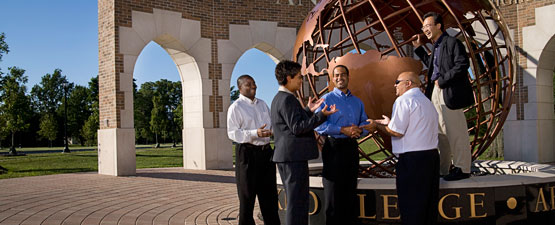Professional Dissertations DMin
Date of Award
1980
Document Type
Project Report
Degree Name
Doctor of Ministry
College
Seventh-day Adventist Theological Seminary
Program
Doctor of Ministry DMin
First Advisor
James D. CHase
Second Advisor
Des Cummings, Jr.
Third Advisor
Arnold A. Kurtz
Abstract
Problem. Television is being regarded by the Seventh-day Adventist Church in Brazil as a new avenue for evangelism. Since research indicates that one of the most effective formats for TV evangelism is the TV spot, this project suggests the use of thirty-second TV spots as a viable means of evangelism in the Brazilian context. The project further recommends principles for the development of a TV-spot series to be used along with a media mix and a follow-up program conducted by youth groups.
Method. An analysis of the history of God's communication with mankind reveals several principles that can be applied to even the most modern methods of communication. Perhaps the most important of these can be found in God's ultimate effort to reach humanity, Jesus Christ - the Word made flesh. In addition, Christ's own methods of touching His hearers provide a model for communicators today. His parables, in particular, had goals strikingly similar to those of today's carefully designed TV spot. Their very brevity validates the religious TV spot's attempt to communicate a stimulating religious message in thirty seconds or less. Jesus's use of simple language and symbols drawn from everyday life in His parables also illustrates valuable principles of communication.
A review of literature confirms as well that the spot is an effective genre, currently popular with religious groups and station and network executives alike. The literature which deals with product-related aspects of TV spots indicates that spots are in demand as a form of advertisement because of their short segment length. THey are also one of the most economical methods of religious presentation. But it is evident that, if spots are to be accepted for airing, especially during prime time, they must be of excellent quality. A study of station/network-related aspects of TV spots reveals that leaders in television are enthusiastic about the use of spots for religious purposes because of rating pressures and time/media considerations. Finally, literature concerning audience-related aspects of TV spots contains many studies showing that audiences are most attentive to that which speaks to their felt needs and interests. It is determined, however, that the religious communicator should seek to stimulate his audience as well as meet its felt needs.
Personal experience has given insights into the actual development of a TV spot series for evangelism. Since television reaches a large, heterogeneous audience, other media may be necessary in order to speak to specific segments of a population during a campaign. Each medium has various advantages and disadvantages which need to be taken into account in the development of a media mix. The impersonality of television also makes a simple spot series insufficient. A message as personal as the Gospel must be communicated also in person. A personal follow-up program is, therefore, necessary. Youth groups function very well in this activity. Not only can young people bring a vibrant message of love to the public, but - as a result of the climate of credibility established by the TV spots - they can experience new witnessing confidence and personal spiritual growth.
Conclusion. The TV-spot series, in conjunction with a media mix and a follow-up program conducted by the youth of the church appears to be a valuable addition to the evangelistic program of the Brazilian Seventh-day Adventist Church. Spots are economical, well-accepted, and effective. Campaigns which use them bring forth favorable attention from the general public to the church. But most importantly, they help to meet the needs of the community - with sensitivity born of love - and to turn the eyes of a seeking world to God's message of hope.
Subject Area
Television in religion
Recommended Citation
Bechara, Assad, "Religious TV Spots: Guidelines for Developing a Mass Media and Follow-up Strategy" (1980). Professional Dissertations DMin. 151.
https://digitalcommons.andrews.edu/dmin/151
Creative Commons License

This work is licensed under a Creative Commons Attribution-No Derivative Works 4.0 International License.
Files over 3MB may be slow to open. For best results, right-click and select "save as..."



